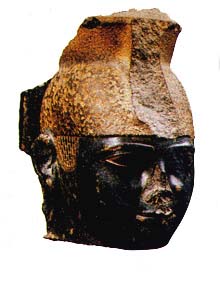Image Details

Jurgen Liepe
Egyptian evidence? Ascending the throne of Egypt in 690 B.C.E., Pharaoh Taharqa is central to the scholarly debate over the number of Assyrian military campaigns against Jerusalem. According to 2 Kings 19:9, Taharqa was pharaoh during the siege. An Egyptian stela fragment (see drawing) describes a major battle between Taharqa’s forces and an enemy whose name is now missing; it has been claimed that the stela refers to a victorious campaign against Assyrian forces in the foothills of Judah. The battle took place after Taharqa rose to power and thus cannot have been part of Sennacherib’s 701 B.C.E. campaign. This would prove that the Assyrians attacked Judah a second time, in 688 B.C.E., and lost the fight. But Taharqa’s stela describes the unnamed enemy marching in defeat to Egypt with their families, cattle and other possessions; author Cogan writes that it is inconceivable that this refers to Sennacherib’s mighty army, which would have never burdened itself in that manner during a military campaign. Indeed, one leading Egyptologist believes Taharqa’s enemy was a group from Libya. Taharqa’s stela, Cogan concludes, does not support the two-campaign theory.
